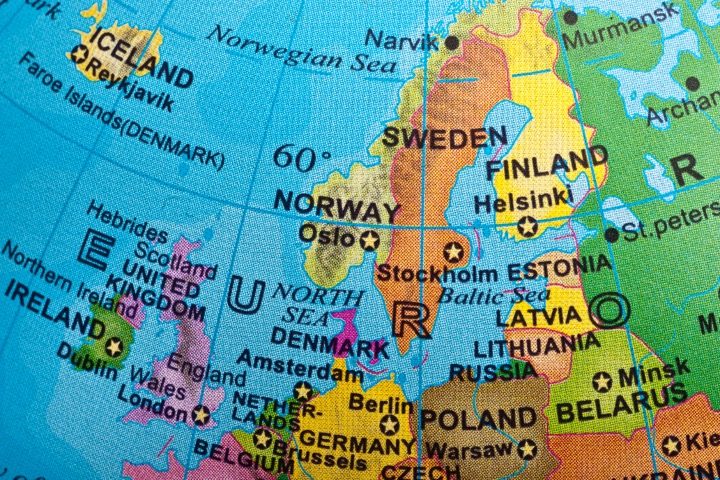
Driven by fears of Russian aggression akin to the invasion of Ukraine, European countries are rushing to sign defense pacts with the United States — placing America within a greater likelihood of becoming involved in European conflicts.
As seen in a recent report from Politico, there is a surge of new defense agreements between the U.S. and northern European countries that will allow for the deployment of American troops to be fast-tracked. This development is part of a trend in which European nations are hedging against the possibility of an attack from Russia, with other measures including the restocking of arsenals and the sending of weapons to Ukraine.
Sweden, Finland, Denmark, Estonia, Latvia, and Lithuania are the six countries that this month signed multi-year pacts with the United States allowing American troops to operate within their borders for training missions and eliminating red tape so that military personnel and equipment can more speedily be sent to those nations during emergencies.
Charly Salonius-Pasternak, a leading researcher at the Finnish Institute of International Affairs, told Politico of the new pacts: “This allows the U.S. to say: This entire region is one defense region. How can we work together, both in planning, exercises, deterrence operations? Now you can do it all in a rational way, rather than having to say — we can’t refuel in Sweden.”
The outlet further reported:
In the wake of the initial Russian seizure of Crimea in 2014, Sweden and Finland began to exercise and train more closely with NATO and individual nations, providing a de facto alliance presence in the High North that had not previously existed. The countries, along with their Baltic neighbors to the south, are located on the front line, anxiously watching their Baltic coasts for Russian activity, and will welcome the increased U.S. presence.
“The key driver for all of these agreements is Russia’s invasion, concerns about European security and needing to have more U.S. forces eastward, particularly the Finland case,” said Max Bergmann, the director of the Europe, Russia and Eurasia Program at the Center for Strategic and International Studies.
The most recent pact was signed with Finland on Monday. Moscow responded by complaining to the Finnish ambassador to Russia. The situation with the Finns was already tense, as Finland entered NATO in April (though its final approval is still pending the green light from Turkey and Sweden), shedding the non-aligned status that Russia preferred for the nation that boasts NATO’s longest border with Russia — a whopping 800 miles stretching all the way from the Baltic Sea to the Arctic.
Finnish authorities accuse Russia of seeking to undermine their country, charging Moscow with weaponizing migration by encouraging migrants from other countries to go to Finland. This has overwhelmed the Finnish border and prompted Helsinki to shut down a number of its crossing points.
Antti Häkkänen, Finland’s prime minister, called the weaponized migration a “hybrid move” on the part of Russia. He accused Moscow of “using every tool they can” to destabilize his country.
In another move of retaliation against Finland for aligning itself more closely with the United States, Russian President Vladimir Putin just days ago stated that Russia will bring back the Leningrad Military District (a long-dormant military group bordering Finland) and set up military units there.
The recently signed pacts, combined with documents inked in previous years, means the U.S. now has the legal standing to place troops all along northern Europe. And this is on top of the defense ties that Nordic countries already have with each other (the Nordic Defence Cooperation agreement, which eliminates hurdles to defense cooperation).
The Russian invasion of Ukraine has sparked several shakeups in European politics. Sweden and Finland have given up their decades-long stance of neutrality, and Denmark joined in with European Union defense cooperation after decades of opting out.
Politico noted of last week’s update of existing agreements between the U.S. and the countries of Estonia, Latvia, and Lithuania regarding NATO deployment plans, cyber cooperation, and Ukrainian troop training:
Tuuli Duneton, undersecretary of defense policy for the Estonian Defense Ministry, said after the signing that the updated agreement, which runs through 2028, addresses the “U.S. military presence in Estonia, contribution to developing the division, cyber defense cooperation and joint Baltic defense.”
The broader focus on troop deployments was underscored on Monday when Germany and Lithuania signed a historic pact to station 5,000 German troops permanently in the Baltic nation, a move all but unthinkable just two years ago.
Furthermore, Denmark’s new 10-year deal with the United States is a marked departure from the European country’s previous status quo, which was to have “no bases, no nuclear warheads and no allied military activity” within its border.
With all these developments, the question remains: Will the maneuvering by the U.S. and its allies serve to deter Russian aggression? Or will it simply escalate the situation and lead to greater conflict in the future?




